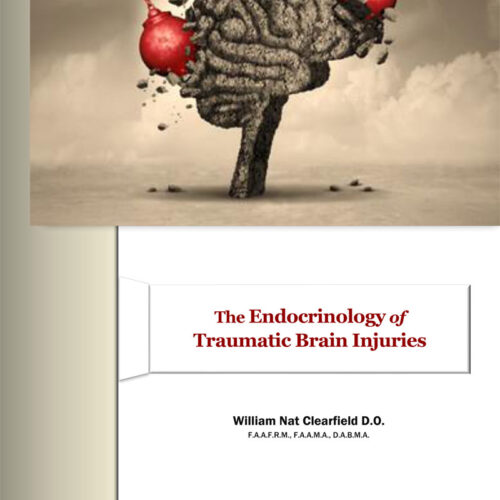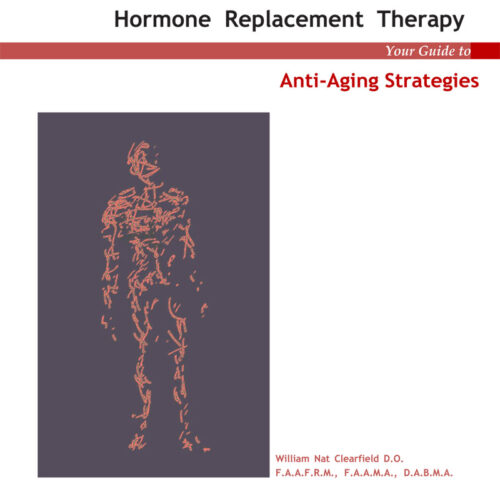
Part 4: Gluten, ‘Leaky Gut’ Syndrome, and Thyroid Disease
In Part I, “Patient Mysteries, Are You Thyroid Deficient?” we reviewed two cases illustrating common clinical presentations of thyroid disease, the anatomy, and physiology of the thyroid gland, symptoms of low thyroid output and common misunderstandings about the cause of thyroid disease.
In Part II, “Patient Mysteries, Are You Thyroid Deficient?” we reviewed diagnostic techniques and offered treatment modalities for a variety of thyroid maladies including medication, supplements, and dietary advice.
In Part III, “Patient Mysteries, Are You Thyroid Deficient?” we provided an overview of the root causes of thyroid disease, and suggested lifestyle and treatment strategies to minimize symptoms and even reverse thyroid disease completely.
Today, in Part IV “Patient Mysteries, Are You Thyroid Deficient?” we take an in-depth look at each root cause, attempt to mitigate specific factors creating thyroid dysfunction from each etiology, and offer suggestions to keep them at bay.
As a reminder, hypothyroid symptoms include brain fog, fatigue, weight gain, a pale puffy face, feeling cold, joint and muscle pain, constipation, dry thinning hair, heavy menstrual flow or irregular periods, slowed heart rate, difficulty getting pregnant, and depression.
The root causes of thyroid disease are:
1. Gastrointestinal or ‘Leaky Gut” Syndrome
2. Heavy Metals and Toxins
3. Infectious Diseases
4. Adrenal Insufficiency
5. Iodine Deficiency
6. Nutrient Deficiencies
The common thread connecting each root cause is “molecular mimicry.” (Pay attention, it will be on the quiz.) Molecular mimics are abnormal, or “foreign” proteins that evolve when our body mistakenly incorporates similar but abnormal compounds into normal tissue.
Consider rheumatoid arthritis. Abnormal cells, produced “mistakenly” in our joints are attacked and destroyed by our own immune system. The process involves the production of powerful inflammatory agents creating havoc in normal tissue.
Similarly, abnormal proteins produced in our vital organs give rise to Systemic Lupus Erythematosus and, in the thyroid gland, hypothyroid autoimmune Hashimoto’s Thyroiditis.
The first root cause of thyroid disease, gastrointestinal dysfunction, is mainly due to the ingestion of highly allergenic compounds, most famously gluten. Gluten, present in wheat, rye, barley and various combinations of these grains, consists of the protein gliadin.
Gliadin closely resembles normal T3, setting in motion a case of “mistaken” identity. The thyroid production sequence, in the course of normal metabolic activity, incorporates the gliadin creating and abnormal T3 hormone.
Eventually, the body recognizes that it doesn’t have enough “real” thyroid substrate to perform its duties and hypothyroid symptoms ensue.
Our Johnny-come-lately immune system eventually realizes critical substances are in short supply and attempts to rectify the situation by producing more (abnormal) tissue, setting in motion a deficiency and (thyroid) failure scenario.
Lastly, the immune system perceives this gluten infused “thyroid” hormone as “foreign” and activates its inflammatory response to chase the invader out, damaging and eventually destroying it’s own (in this case thyroid) tissue.
Routine laboratory tests, if one adheres to the guidelines of the American Society of Clinical Endocrinologists, 3 rarely detects significant, “subclinical” disease. The average time from onset to accurate diagnosis of autoimmune thyroid disease, (which constitutes 90% of all such cases, 4) is 5-10 years. 5 These patients are frequently labeled as “crazy, whiners, or neurotic nerds,” frequently “treated” with antianxiety agents such as Xanax or other benzodiazepines, or antidepressants, Prozac, or Zoloft and such (oh my!)
Without addressing the root cause of gluten sensitivity, even when treated with thyroid replacement hormone, one never quite gets to the promised land of thyroid tranquility. Highs and lows occur frequently and thyroid replacement dosages need to be changed frequently.
THE AUTOIMMUNE GASTROINTESTINAL THYROID CONNECTION
80% of our immune system resides in the gastrointestinal tract. Without a healthy gut, it is impossible to have adequate defenses against infectious disease.
The Standard American (S.A.D.) Diet, high in fat, fast foods, and sugar, along with our exposure to 80,000 new environmental toxins that did not exist in 1970, sleep deprivation, alcohol, chronic stress and liver toxicity, create a siege atmosphere that our gastrointestinal, and by proxy, our immune system lives under.
This assault results in an outpouring of immune chemical defenses. Zonulin, a physiologic modulator, is overproduced in this “warlike” atmosphere. Zonulin specifically weakens and widens the attachments in our intestinal lining. Large particles that normally traverse the digestive tract due to “tight” intestinal junctions, can now “leak” into the bloodstream.
Agents especially offensive to the intestine and friendly to the production of zonulin include sugar, industrial seed oils, nightshades (potatoes, tomatoes, eggplant, and peppers, excluding black pepper), and the granddaddy of all them all, the aforementioned gluten.
As noted, gluten is a protein found in wheat, barley, rye and a cross between wheat and rye called triticale. It is a major stressor of and results in the loosening of, the junctional walls of the small intestine. Once weakened, toxins, microbes, and food particles are able to escape their gastrointestinal boundaries and “leak” into the bloodstream. Left unchecked, the body fights back by developing defenses, antibodies, to its own tissue.
The thyroid is particularly vulnerable to these “leaked” toxins because gluten is structurally similar to thyroid tissue. The body misinterprets normal thyroid tissue as an invader leading to hypothyroid signs and symptoms and activation of the immune system as described above. The end result is Hashimoto’s Thyroiditis.
To identify Hashimoto’s Thyroiditis, we must measure Thyroid Peroxidase Antibodies (TPO) and Thyroglobulin Antibodies (TgAb), markers for thyroid autoimmunity. Laboratory instruments differ, but in general, reference ranges for TPO antibodies are <9 iu/ml and for Antithyroglobulin Antibodies < 1.0 IU/ml.
 To minimize leaky gut syndrome and to prevent or reverse Hashimoto’s autoimmune disease we address the gastrointestinal assault with our “4 R Program.”
To minimize leaky gut syndrome and to prevent or reverse Hashimoto’s autoimmune disease we address the gastrointestinal assault with our “4 R Program.”
1. We “ Remove ” inflammatory foods such as gluten, dairy, corn, soy, eggs, and sugar. Gastric irritants like alcohol, caffeine or drugs are also eliminated. Infections, even low-grade infections need to be treated with herbs, antiparasitic and antifungal medication, antifungal supplements and appropriate antibiotics.
2. We “ Replace” essential nutrients for proper utilization of foodstuff. Digestive enzymes, hydrochloric acid, and bile salts are needed for proper digestion.
3. We “ Restore” the normal GI flora. Probiotics containing bifidobacteria and lactobacillus dosed from 25 to 100 billion units a day along with prebiotics and fiber to the rescue.
4. We “ Repair ” the gastrointestinal lining with L-glutamine, zinc, omega 3 fish oil, vitamins A, C, E, slippery elm and aloe vera containing supplements.
Every thyroid patient, even those testing negative for gluten sensitivity, are given a trial gluten-free diet for at least 30 days. While “controversial” – the New York Times panned this approach in an article written on July 5, 2015 – it has been quite a game-changer for countless patients in our clinic. Best of all, it costs nothing!
Cruciferous vegetables, including broccoli, cabbage, brussels sprouts, kale, and soy, among others, are “goitrogens.” These increase the need for iodine, potentially damaging the thyroid. Steaming can reduce the danger by 1/3 and thoroughly cooking and discarding the water in case of boiling decreases the harm
by 90%. Avoid very low carb or zero carb diets. They tend to inhibit the conversion of T4 into T3.
Supportive foods include sea vegetables, kelp flakes, wakame, arame, and hijiki. Fermentable fiber increases the production of gut bacteria that produce butyrate, an immune function stimulator. Fermentable fiber comes from sweet potatoes, yams, plantains, taro, potatoes, onions, Jerusalem artichokes, and garlic.
Vitamin A, vitamin D, zinc and selenium are necessary for the smooth functioning of the Hypothalamic-pituitary-thyroid axis. Kelp contains nutrients and minerals that support the thyroid, particularly iodine.
Iodine and l-tyrosine are key components in the synthesis of thyroid hormones. Coleus extract containing forskolin promotes thyroid hormone metabolism.
Ashwagandha and guggul are also sustaining healthy thyroid function. Acting as powerful antioxidants, vitamins A and C, selenium and guggul combine with curcumin to neutralize free radicals that affect iodothyronine 5’-monodeiodinase enzyme activity, the limiting factor in the conversion of T4 to the active T3 hormone.
While the “cure” outlined above seems overly complicated, we have developed a simple 14 day “4 R” program. Easy to follow, you receive daily, detailed online dietary instructions, food and snack recommendations, recipes, and a shopping list delivered via your email.
We’ve incorporated the replace, repair, and restore steps into a simple shake and supplement pack taken twice daily. After completing the “4 R” program, we follow up with our own homegrown Reno Tahoe Thyroid Enhancement Diet and/or a generic gluten-free roadmap.
Call us at 775-359-1222 to get started on the road to thyroid health and stay tuned for the next exciting installment of Patient Mysteries, Part V, Heavy Metals and Toxins as a Root Cause of Thyroid Disease, in the next edition of Healthy Beginnings Magazine.
I am truly grateful for the support and encouragement I’ve received from the many readers of Healthy Beginnings. Happy Thanksgiving, the best is yet to come. Dr. Bill.
References:
1. Clearfield, W., “Patient Mysteries: Are You Thyroid Deficient?,” Healthy Beginnings, August 31, 2015, P. 8.
2. Myers, A., The Autoimmune Solution,” Harpercollins; 2015, Location 195 (Kindle Edition)
3. Garber, JR.,Cobin, R., Gharib, H., et al., Clinical Practice Guidelines For Hypothyroidism In Adults, Endocr Prac. 2012; 18(No.6) 989. Hollowell JG et al. J Clin Endocrinl Metab 2002 87(2)489499
4. Cooper, D.S.,Hashimoto’s Disease, U.S. Department of Health and Human Services division, http://www.womenshealth.gov/publications/ourpublications/factsheet/hashimotodisease.html#c
5. Cooper, D.S.,Hashimoto’s Disease, U.S. Department of Health and Human Services division, http://www.womenshealth.gov/publications/ourpublications/factsheet/hashimotodisease.html#c
6. Clearfield, W., “Patient Mysteries: Are You Thyroid Deficient?, Part 1,” Healthy Beginnings, July 31, 2015, P.15.



